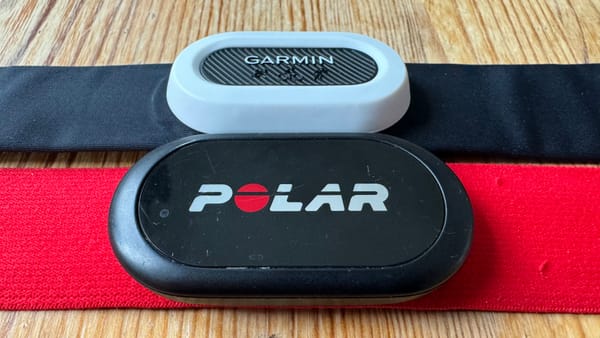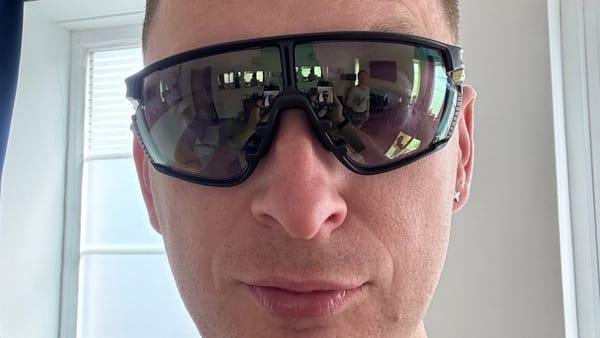A short time with the Julbo Evad-1
Julbo, French maker of sunglasses, partnered with ActiveLook, a manufacturer of a wearable heads-up display. This allows the wearer to see geospatial and physiological data displayed in their field of view, without loss of an area of sight.
TL;DR?
Good hardware, usefulness heavily restricted by the software. Hopefully the software will be modified in short order to make these more than a face-mounted novelty.
Hardware
The sunglasses are very light, and the photochromic lenses adjust incredibly quickly to changes in ambient light conditions, especially when compared to a photochromic lens from Oakley, which is as slow as to be useless.
The inside of the lenses is slightly mirrored; it is this reflective coating that allows the data to be projected into the wearer's field of view. This is visible in all light conditions, although some finessing of sunglasses position is required to see the full screen (I added a small piece of Sugru to the nose bridge to situate the display for my eyesight).
One can cycle through different display configurations by swiping the top-left corner of the left lens, although I rarely seem to be able to trigger this correctly.
Unlike other wearable displays, thanks to the low mass of the sunglasses, and the supplied straps, I had no problem seeing the display, even when running.
Software
Unfortunately, as with so many new pieces of hardware, this wearable display is let down by the software behind it. There are two options for the software: running on a phone, or a wearable (Apple Watch, or Garmin).
Phone
The software on the phone allows for easy control of the wearable display: one can move the projected position of data around, allowing for better alignment with the wearer's line of sight. One can use the app to connect to an external heart-rate monitor, but no other sensors.
Garmin watch
The CIQ app is unfortunately crippling, with its activity set to 'street run', and not allowing data beyond the pre-configured fields to be displayed (eg no power data). One is also not able to trigger structured workouts from this mode, further limiting its use. If this was changed to a CIQ data field, as Form have done with their goggles, this would allow it to be added to any normal activity, which would allow the wearable display to neatly augment an existing workout regimen.
Closing thoughts
The Evad-1 is, based on the photos on the site, targetted at cyclists, but I imagine most cyclists willing to spend 500 euros on the Evad-1 will also want to see data from all their existing sensors, especially a power meter, and not see poor geospatial data from their phone's GPS, or, have to compromise their data recording by forcing a sport mode.
This becomes especially true when worn for running, where geospatial innacuracies are more apparent, and we're plunged back into the world of waiting for pace to update, instead of seeing it real-time (as those of use with a Stryd are used to).
Unfortunately, at the moment, it feels like Julbo bought the dev-kit, replaced it with their (excellent) lenses and frames, and did nothing to optimise it for a real target market, beyond the technologically curious. With changes made to the software, these could be incredibly useful (not having to leave the aero position to see performance information, anyone?), but until then, they are a face-mounted novelty and conversation piece.



